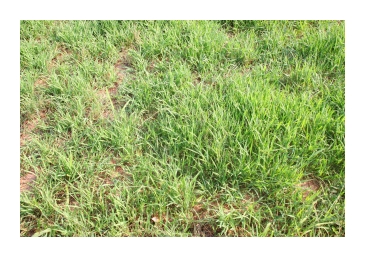Pasture Management is defined as the practice of growing healthy grass and relate plants to profitably sustain forage availability and livestock productivity while ensuring ecological health.
Pastures are the main sources of forage and nutrients for dairy animals. The amount of milk produced by these animals is highly dependent on the quality and quantity of food they eat. With improvements in fencing, new variety of grass, irrigation systems, proper pasture and feeding management systems, the productivity of our local dairy animals can increase significantly.
Points to consider when establishing pastures:
- Assessment of the existing pasture - Soil testing should be carried out to identify the nutrient deficiencies in the soil, ph levels, and soil moisture and soil components. This should be used to determine the amount and type of fertilizer needed for the soil (special blends can be formulated), the type of irrigation system to be used, the type of land preparation that will be needed.
- Land Preparation - Preparing lands for pasture establishment is a critical part of any Pasture Management System. It is important to clear lands to remove trees, shrubs and weed that will compete with forage for water, light air and nutrients. Land should be ploughed to break up and loosen soil particles. Harrowing should also be done to get the soil to a fine till for easy root penetration. Removal of stumps and rock should also be taken into consideration.
- Establishing Irrigation Systems - Irrigation is one of the major factors that influence the growth of the pastures. Its imperative that pastures receives adequate amount of water. This is critical in the first three months after sowing seeds.
- Selection of appropriate species of forages - It is important to assess the type of forage to be planted and also the use of the forage i.e. for grazing or fodder (hay, silage). Choosing the right soil type and geographical location that matches the forage type is of importance.
Improved cultivars of pasture forages available in Jamaica:-
Cayman Grass

-
Scientific Name: Brachiaria hybrid cv. CIAT BR 02/1752
Crude Protein Potential: Up to 17%
Palatability: High
Digestibility: 70%
Sowing Rate: 8-10 kg/ha
Uses: Grazing, hay, green chop, for use as silage
Drought Tolerance: High
Tolerance To Water Logging: High
Days to First Grazing: 90-100
Time in Rotation: 25-30 Days
Maximum Height to Exit Pasture: 12 inches/ 30cm -
Mombasa (Guinea Grass)

-
Scientific Name: Panicum maximum c.v Mombasa
Crude Protein Potential: 8-12% on poor soils
Palatability: Excellent
Digestibility: 55%
Sowing Rate: 6-8 kg/ha
Uses: Pasture, cut-and-carry, silage and hay
Drought Tolerance: High
Minimum Height to Cut or Graze: 10-12 inches
Tolerance to Water Logging: Poor
Time to first Grazing: 80-90 Days
Time in Rotation: 30-40 Days -
Mulato II Grass

-
Scientific Name: Brachiaria ruziziensis x B. brizantha x B. decumbens
Crude Protein Potential: Up to 18%
Palatability: High
Digestibility: High
Sowing Rate: 8-10 kg/ha
Uses: Grazing, hay, silage, fresh in feeding trough
Drought Tolerance: High
Tolerance To Water Logging: Poor
Days to First Grazing: 70-80 days on average
Time in Rotation: 25-45Days. -
Ubon Stylo

-
Scientific Name: Stylosanthes guianensis cv. Ubon
Crude Protein Potential: 14 - 20% on poor soil
Palatability: High
Digestibility: High
Sowing Rate: 6-10 kg/ha
Uses: Pasture, cut-and-carry, silage and hay
Minimum Height to Cut or Graze: 20 cm
Resistance to: Anthracnose
Time to First Grazing: 6-8 weeks
Time in Rotation: 4-8 weeks -
Pinto Peanut

-
Scientific Name: Arachis pintoi
Crude Protein Potential: Up to 17- 20%
Palatability: High
Digestibility: 60% - 76%
Sowing Rate: 10-15 kg in pods/ha
Uses: Grazing in association with grasses, green chop
Tolerance To Water Logging and Drought: Moderate
Heavy Grazing: High -
Pangola Grass - Scientific name: Digitaria eriantha

-
Grows well in tropics and sub tropics climate.
Grows well in various soil types but especially well in moist soils.
Tolerant to drought, water logging, suppresses weeds and grows relatively quickly after grazing.
Used extensively for pasture, hay and silage.
Can withstand heavy grazing, regular grazing 2-3 weeks intervals at 10-15 cm to 30-40 cm is to maintain the quality of the grass.
Yields ranges from about 10-20 tons per hectares and may exceed 30 tons under ideal condition.
-
-
Pest Management Systems - Pest and disease affecting pasture can be costly. It is therefore vital for Pest Management system be implemented to continuously monitor the pasture for weeds, pest and other disease.
Further details on Pasture Management System: Dairy Management Handbook


